Affiliate links on Android Authority may earn us a commission. Learn more.
Google Pixel vs iPhone: The battle for smartphone supremacy
Published onOctober 1, 2024
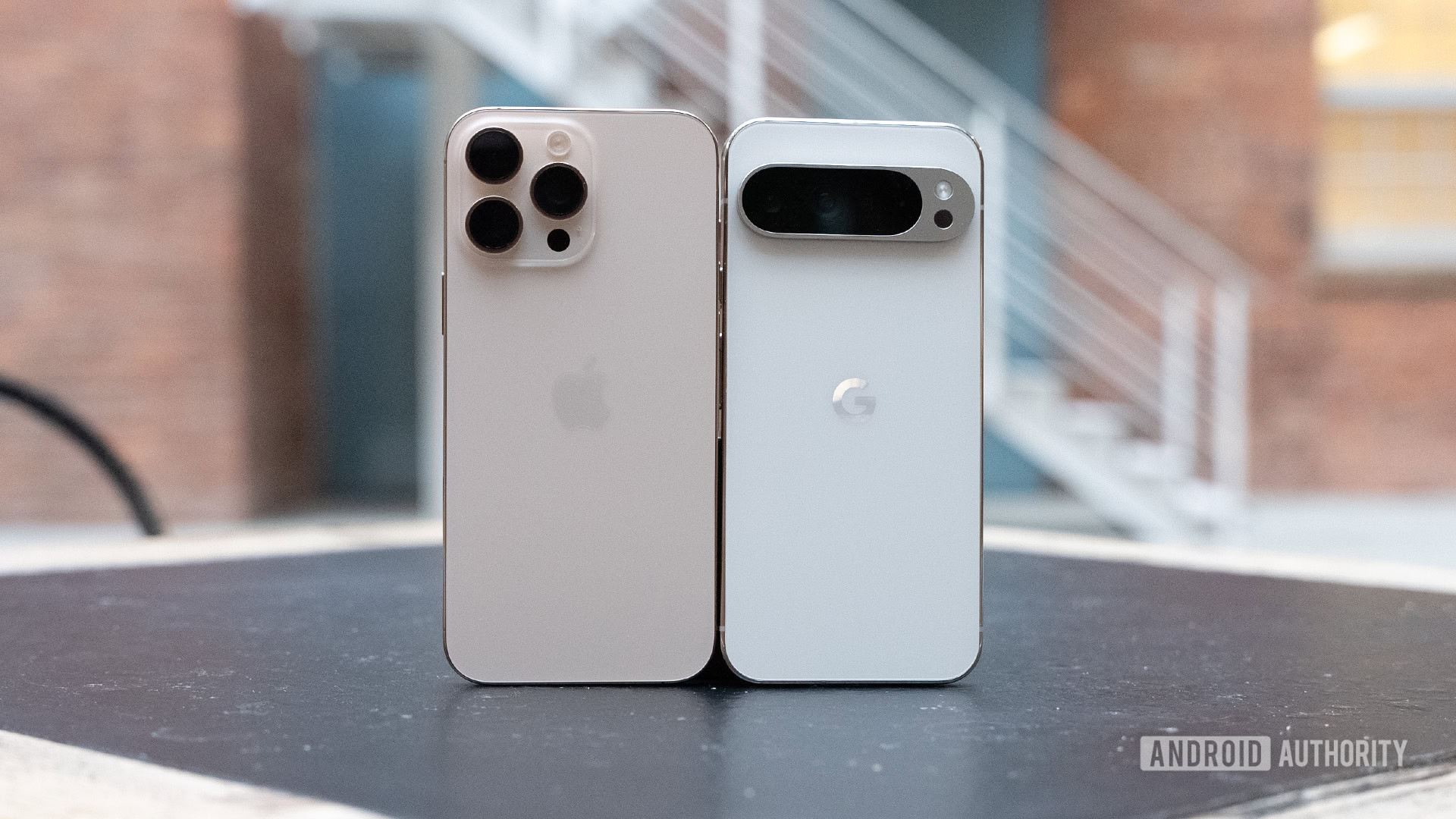
Android and iOS are the world’s most popular smartphone operating systems, covering practically the entire landscape of smartphones between themselves. So it stands to reason that the makers of Android and iOS would also make smartphones that get all the details right for an amazing smartphone experience. But how exactly does the iPhone stand against the Pixel when you look beyond the advantages of their OS? We compare the iPhone vs Pixel across different categories to find out how these smartphone kingpins compete against each other.
iPhone 16 series vs Google Pixel 9 series: At a glance
- The iPhone 16 series has a better chip than the Pixel 9 series, providing better performance, efficiency, and other gains.
- The iPhone 16 series generally has better battery life than the Pixel 9 series.
- The iPhone 16 series has a better ecosystem integration than the Pixel 9 series.
- Both lineups focus on computational photography more than spec-sheet heavy cameras, though the iPhone 16 series comes with the new Camera Control button.
- Google promises a longer software update window for the Pixel 9 series, as Apple doesn't make any software update promises for the iPhone 16 series.
- The Pixel 9 Pro XL charges quicker than the iPhone 16 Pro Max, though the difference is not as pronounced between the base variants of both lineups.
- Pixel 9 series has more advanced display technology than the iPhone 16 series.
- Pixels are generally better value than iPhones.
iPhone vs Pixel: Product lineup
Both Apple and Google follow a similar philosophy of continuing to sell their older phones even when the newer ones are released. This lets them maintain a healthy list of options without needing to launch too many phones in a year. When the new phone launches, the old phone gets a permanent discount and stays as part of the new lineup, while one of the even older phones gets knocked out.
The iPhone primarily has three product lines: the iPhone SE, the base iPhone, and the iPhone Pro. The iPhone SE follows a relaxed multi-year refresh schedule, getting a refresh once in a blue moon. The base iPhone and the iPhone Pro get refreshed annually. They also come in two sizes, with Apple settling into a base size and a larger variant. When the series is refreshed, Apple usually only keeps the older regular-sized base iPhone.
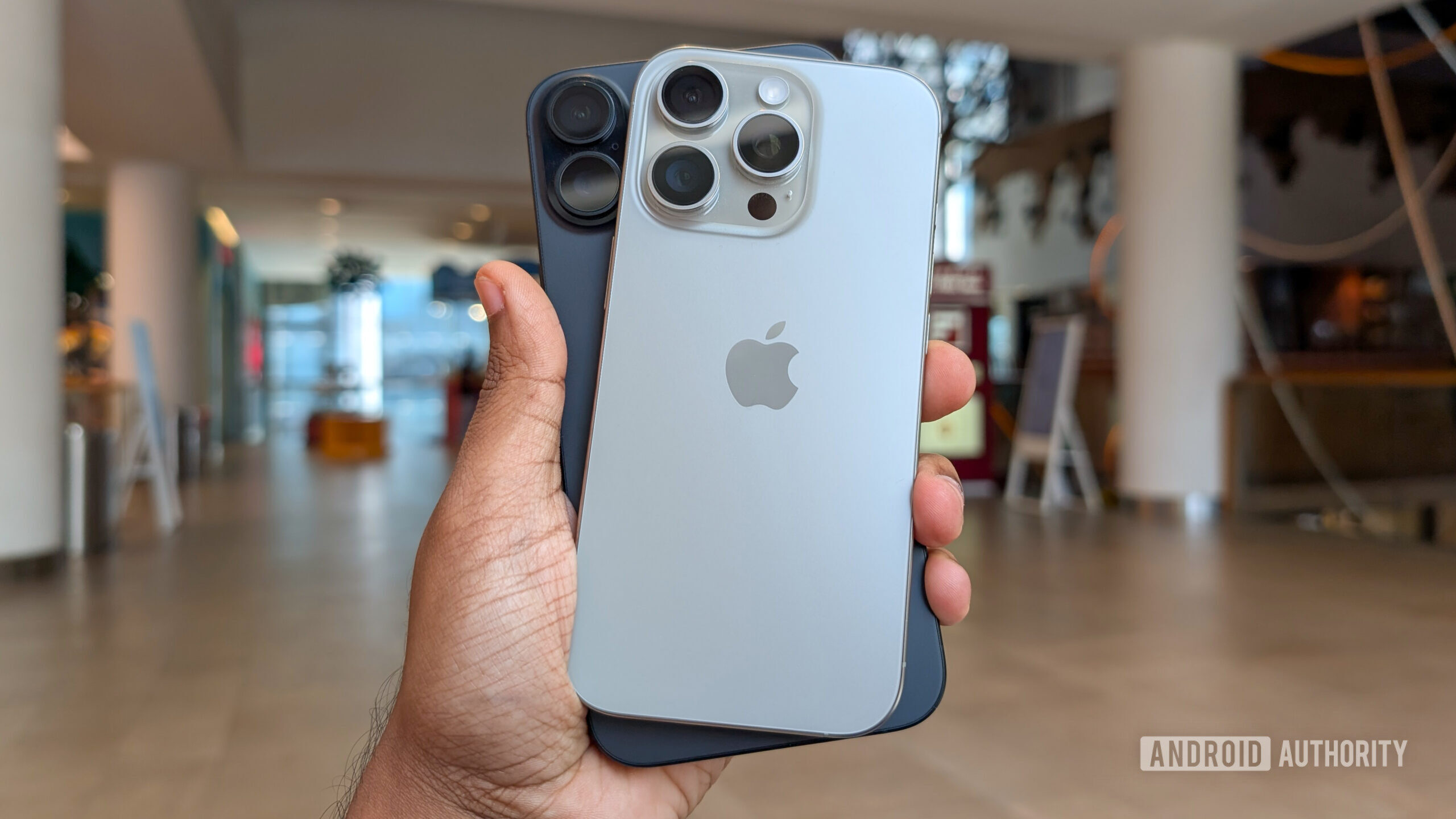
The iPhone lineup right now comprises the following phones:
- iPhone 16 Pro and iPhone 16 Pro Max
- iPhone 16 and iPhone 16 Plus
- iPhone 15
- iPhone 14
- iPhone SE
Google also has three conventional phone product lines: the Pixel A, the base Pixel, and the Pixel Pro. All three are refreshed annually, though the A-series is refreshed separately from the other two. Google also has a foldable in the form of the Pixel 9 Pro Fold, for which Apple does not have a relevant competitor.
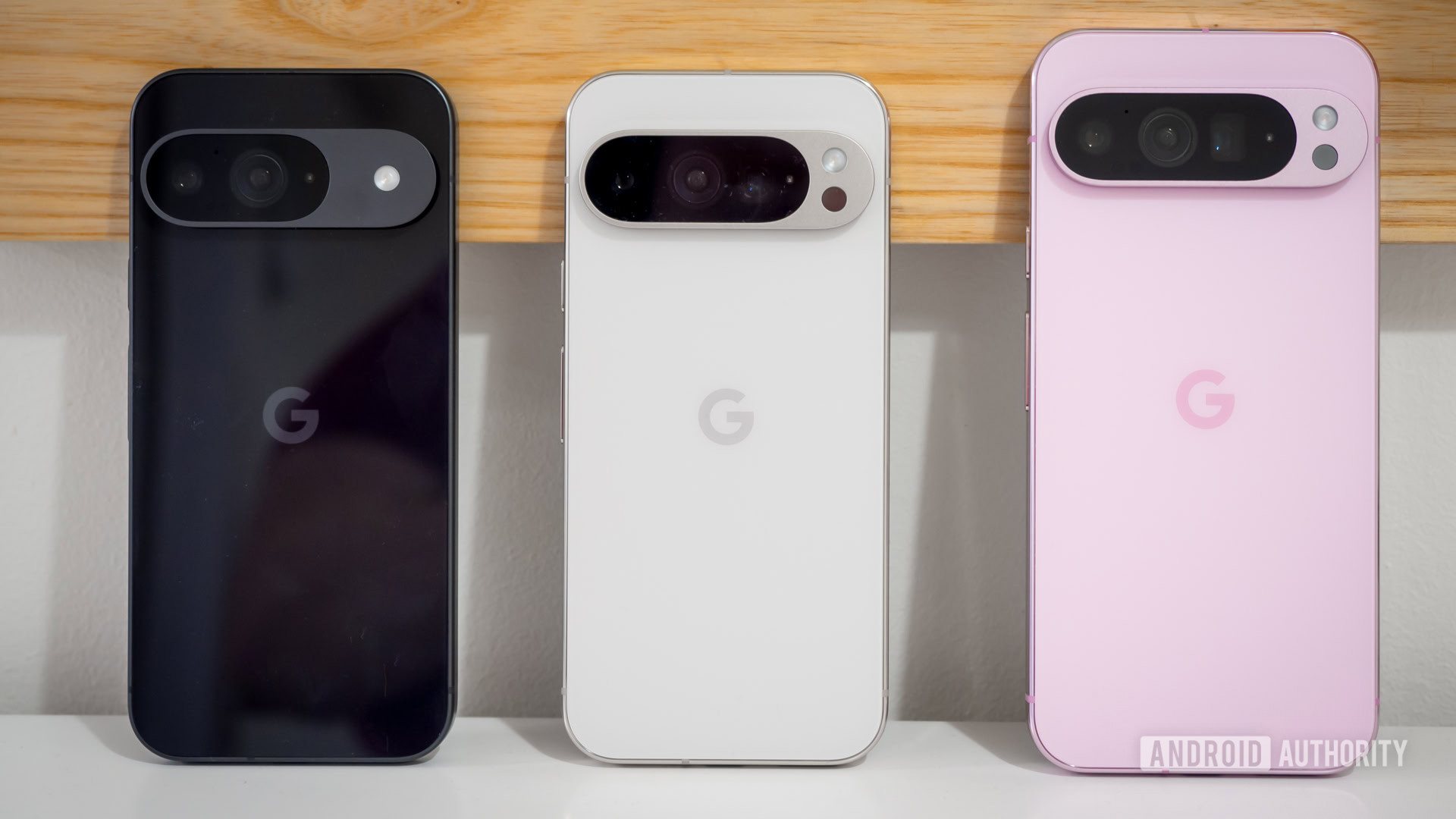
The Pixel lineup right now comprises the following phones:
- Pixel 9 Pro Fold
- Pixel 9 Pro and Pixel 9 Pro XL
- Pixel 9
- Pixel 8 Pro
- Pixel 8
- Pixel 8a
- Pixel 7 Pro
- Pixel 7
- Pixel 7a
Both lineups have plenty of options across budgets, so you can get the phone that works for your needs.
iPhone vs Pixel: Hardware
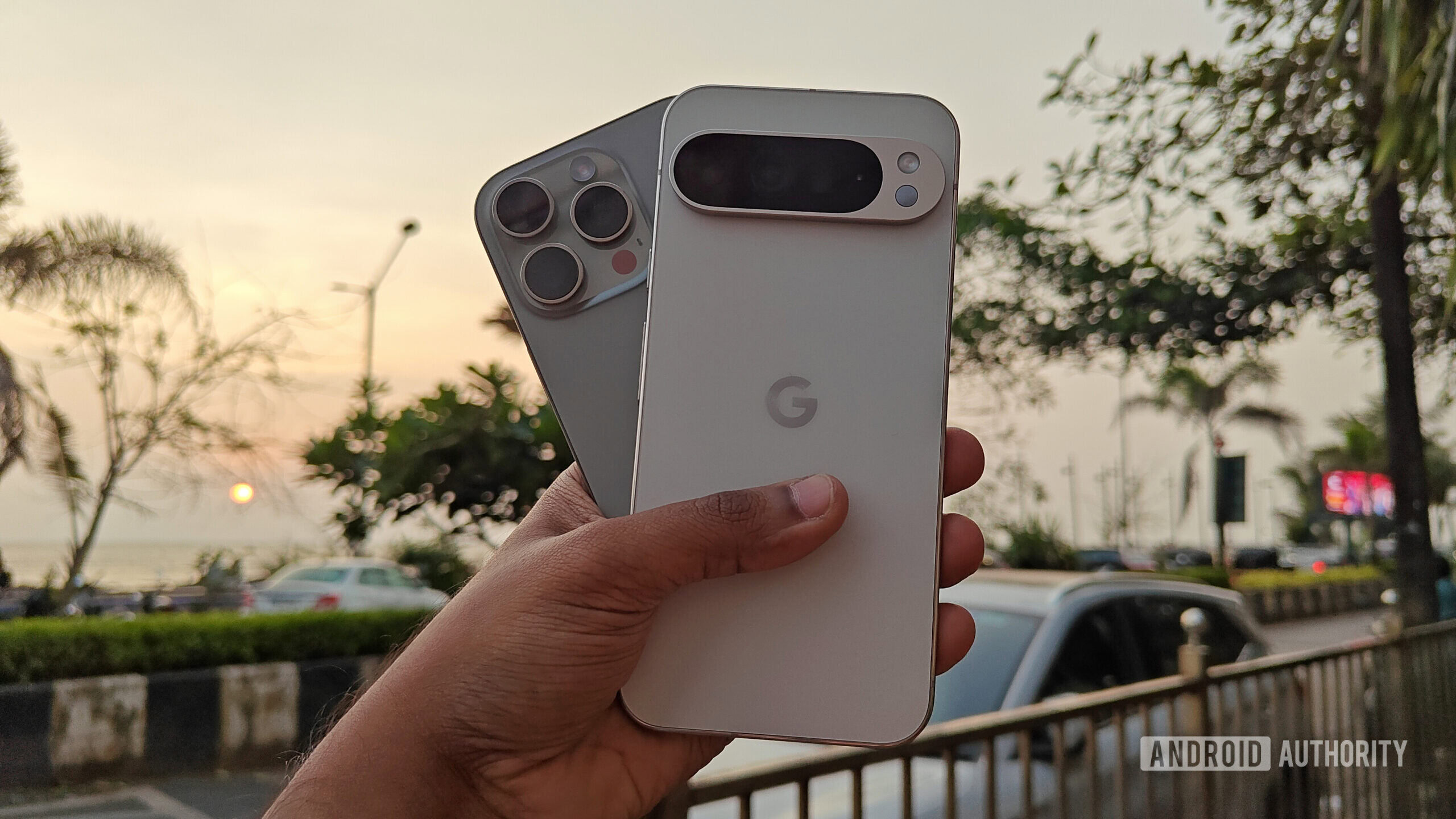
Both the iPhone and the Pixel take incredible care to keep phones familiar and experiences consistent across generations. You won’t find wholesale changes year-on-year. Instead, the specifications are lightly tweaked and refreshed to give you a cohesive and seamless upgrade experience if you change your phone frequently.
Here is a spec comparison of the iPhone 16 vs Pixel 9:
| Apple iPhone 16 | Google Pixel 9 | |
|---|---|---|
Dimensions and weight | Apple iPhone 16 147.6 x 71.6 x 7.8mm 170g | Google Pixel 9 152.8 x 72 x 8.5mm 198g |
Display | Apple iPhone 16 6.1-inch OLED display 2,556 x 1,179 resolution 460ppi 60Hz refresh rate 2,000 nits max brightness HDR support | Google Pixel 9 6.3-inch OLED 2,424 x 1,080 resolution 422ppi 60-120Hz refresh rate 2,700 nits max brightness HDR support |
Processor | Apple iPhone 16 Apple A18 | Google Pixel 9 Google Tensor G4 |
RAM | Apple iPhone 16 8GB | Google Pixel 9 12GB |
Storage | Apple iPhone 16 128GB, 256GB, or 512GB | Google Pixel 9 128 or 256GB |
Cameras | Apple iPhone 16 Rear: - 48MP main 26mm focal length, 2.0µm, f/1.6, sensor-shift OIS - 12MP 2x telephoto 52mm focal length, 1.0µm, f/1.6, sensor-shift OIS Front: - 12MP Dedicated camera button | Google Pixel 9 Rear - 50MP wide (ƒ/1.68 aperture, 82-degree FoV, 1/1.31-inch sensor, AF, OIS, EIS) - 48MP ultrawide (ƒ/1.7 aperture, 123-degree FoV, 1/2.55-inch sensor, AF) Laser AF Front: - 10.5MP (ƒ/2.2, 95-degree FoV, AF) |
Power | Apple iPhone 16 Unspecified battery size Up to 25W wired charging Up to 25W wireless charging with MagSafe No reverse wireless charging No charger in box | Google Pixel 9 4,700mAh 27W wired charging (USB-PD 3.0 PPS) 15W Qi wireless charging Reverse wireless charging (Battery Share) No charger in box |
Security | Apple iPhone 16 Face ID Unspecified years of security updates | Google Pixel 9 Titan M2 chip Face Unlock (Class 3) Ultrasonic under-display fingerprint scanner |
Software | Apple iPhone 16 iOS 18 | Google Pixel 9 Android 14 |
Materials and durability | Apple iPhone 16 Ceramic Shield 2 front Color-infused glass back Aluminum frame IP68 | Google Pixel 9 Gorilla Glass Victus 2 front and back Aluminum frame IP68 |
Colors | Apple iPhone 16 Ultramarine, Teal, Pink, White, Black | Google Pixel 9 Obsidian, Porcelain, Wintergreen, Peony |
Here is a spec comparison of the iPhone 16 Pro Max vs Pixel 9 Pro XL:
| Pixel 9 Pro XL | iPhone 16 Pro Max | |
|---|---|---|
Display | Pixel 9 Pro XL 6.8-inch LTPO OLED 1,344 x 2,992 resolution 1-120Hz refresh rate 3,000 nits peak brightness | iPhone 16 Pro Max 6.9-inch OLED display 2868 x 1320 resolution 460ppi 120Hz refresh rate 2,000 nits max brightness HDR support |
Processor | Pixel 9 Pro XL Tensor G4 | iPhone 16 Pro Max Apple A18 Pro |
RAM | Pixel 9 Pro XL 16GB | iPhone 16 Pro Max 8GB |
Storage | Pixel 9 Pro XL 128GB / 256GB / 512GB / 1TB | iPhone 16 Pro Max 256 / 512GB / 1TB |
Battery | Pixel 9 Pro XL 5,060mAh | iPhone 16 Pro Max Undisclosed |
Power | Pixel 9 Pro XL 37W wired charging Wireless charging Battery Share | iPhone 16 Pro Max 28W wired charging Wireless charging MagSafe |
Cameras | Pixel 9 Pro XL Rear: - 50MP wide camera, ƒ/1.68, 82-degree FoV, 1/1.31" sensor - 48MP ultrawide camera, ƒ/1.7, 123-degree FoV, 1/2.55" sensor - 48MP telephoto camera, ƒ/2.8, 22-degree FoV, 5x optical zoom, 1/2.55" sensor Front: 42MP, ƒ/2.2, 103-degree FoV | iPhone 16 Pro Max Rear: - 48MP primary, 24 mm, ƒ/1.78 aperture - 12MP 5x telephoto 120mm focal length, f/2.8, sensor-shift OIS - 48MP Ultrawide, 13 mm, ƒ/2.2 aperture and 120° field of view Front: - 12 MP wide (23mm, ƒ/1.9) |
Connectivity | Pixel 9 Pro XL 5G (mmWave + Sub6) Wi-Fi 7 (802.11/be) Bluetooth 5.3 (dual antenna) UWB | iPhone 16 Pro Max 5G (Sub6 and mmWave in US) Wi-Fi 7 Dual-eSIM (no physical SIM in US) Bluetooth UWB |
Security | Pixel 9 Pro XL Face Unlock (Class 3) Ultrasonic under-display fingerprint sensor Titan M2 chip | iPhone 16 Pro Max Face ID |
Durability | Pixel 9 Pro XL IP68 Gorilla Glass Victus 2 | iPhone 16 Pro Max IP68 Ceramic Shield 2 (front glass only) Titanium frame |
Software | Pixel 9 Pro XL Android 14 7 years of OS, security, and Pixel Drop updates | iPhone 16 Pro Max iOS 18 |
Dimensions and weight | Pixel 9 Pro XL 162.8 x 76.6 x 8.5mm 221g | iPhone 16 Pro Max 163 x 77.6 x 8.25 mm 227g |
Colors | Pixel 9 Pro XL Obsidian Porcelain Hazel Rose Quartz | iPhone 16 Pro Max Black Titanium White Titanium Natural Titanium Desert Titanium |
Before we move on to specific sections, it’s worth pointing out that the iPhone 16 Pro and 16 Pro Max come with Titanium as a mid-frame build material, while the rest of the iPhone 16 lineup and the Pixel 9 series skips out on the Titanium and comes with Aluminum as its mid-frame build material. All phones have a glass back, though.
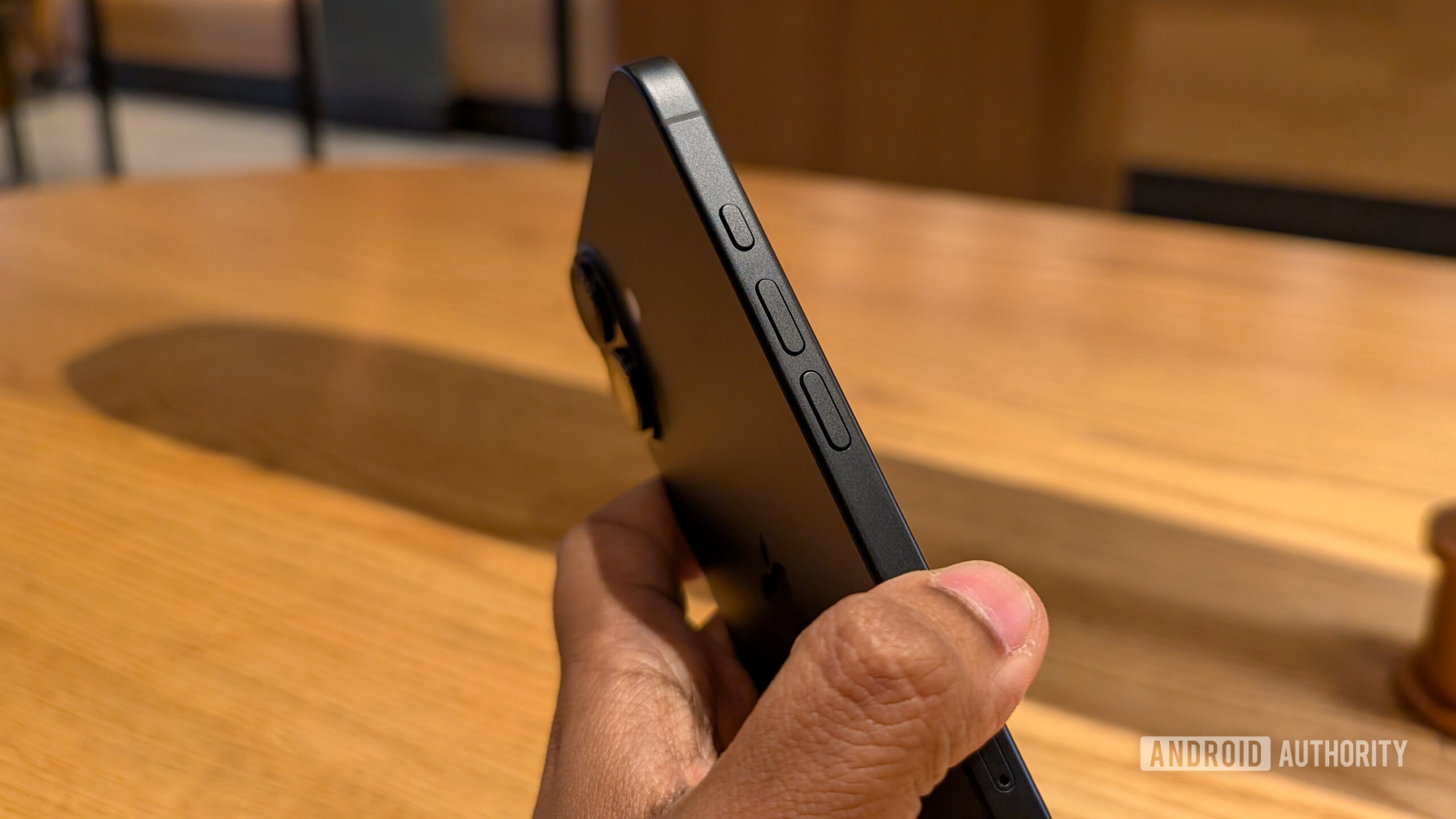
The iPhone 16 series also comes with an extra button in the form of the Action button. This button primarily replaces the dedicated Mute switch present on previous iPhones, but surprisingly, it is immensely customizable. The Pixel 9 series does not have any such dedicated buttons.
Additionally, both the iPhone 16 series and the Pixel 9 series come with an IP68 rating. However, the Pixels are rated for dust and water resistance of up to 1.5 meters for 30 minutes, while the iPhone 16 series bumps up the resistance rating for up to 6 meters for 30 minutes.
Chips
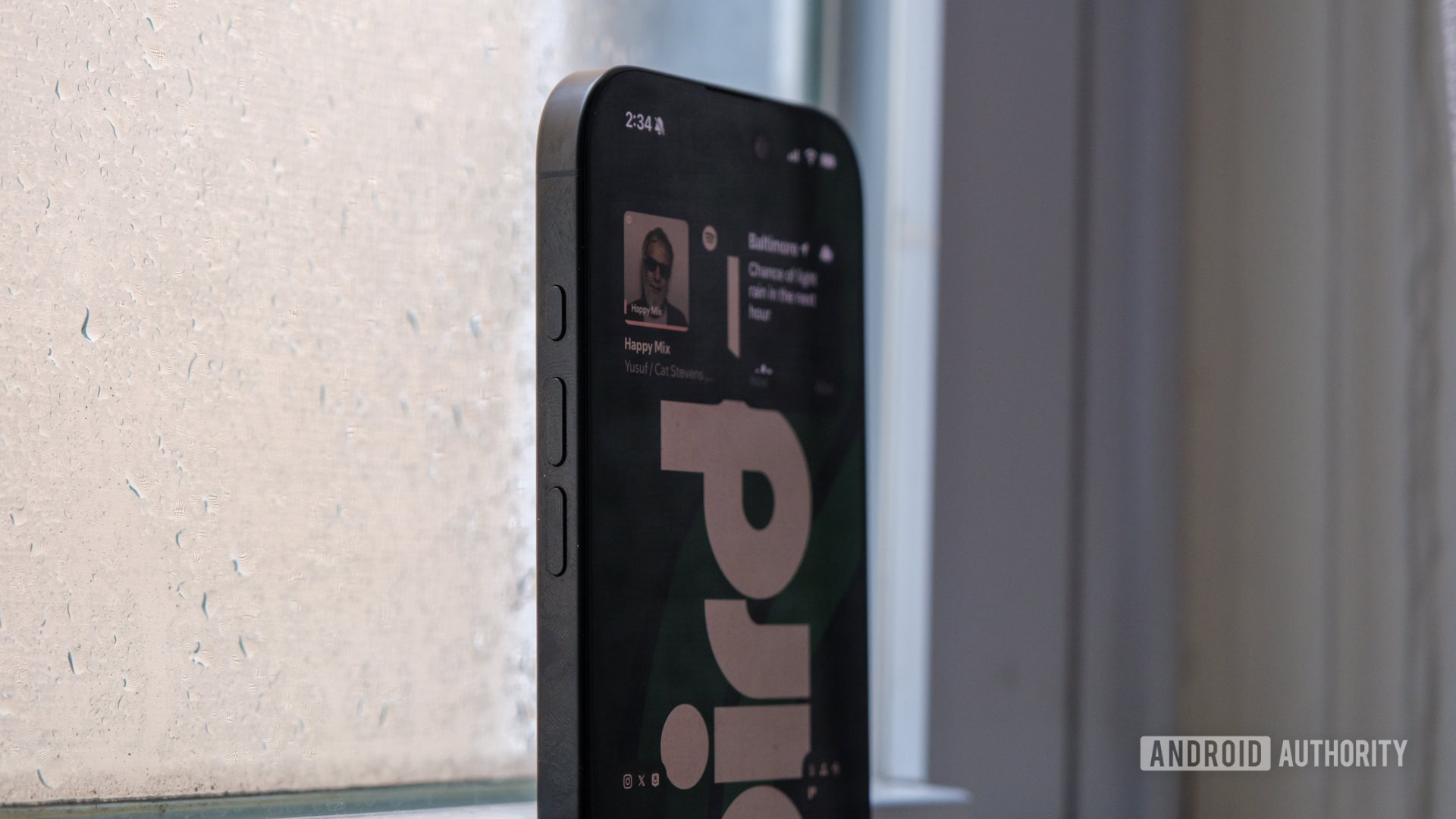
Apple and Google have used their own chips inside their respective smartphones for a few generations. On iPhones, you will find the Apple A-series chips, the latest being the Apple A18 found in the iPhone 16 and 16 Plus, alongside the Apple A18 Pro found in the iPhone 16 Pro and 16 Pro Max. You will find Google’s Tensor chips on Pixels, with the latest being the Tensor G4 found in the Pixel 9 series.
Apple’s A-series chips are practically the best silicon you can find powering a smartphone these days. While Qualcomm’s Snapdragon 8-series SoC has closed the gap when it comes to performance, Apple continues to remain the leader. If you are looking for a powerful phone that can do all the tasks you throw at it and do all of it with speed, then the iPhone with Apple silicon should be one of your primary choices.
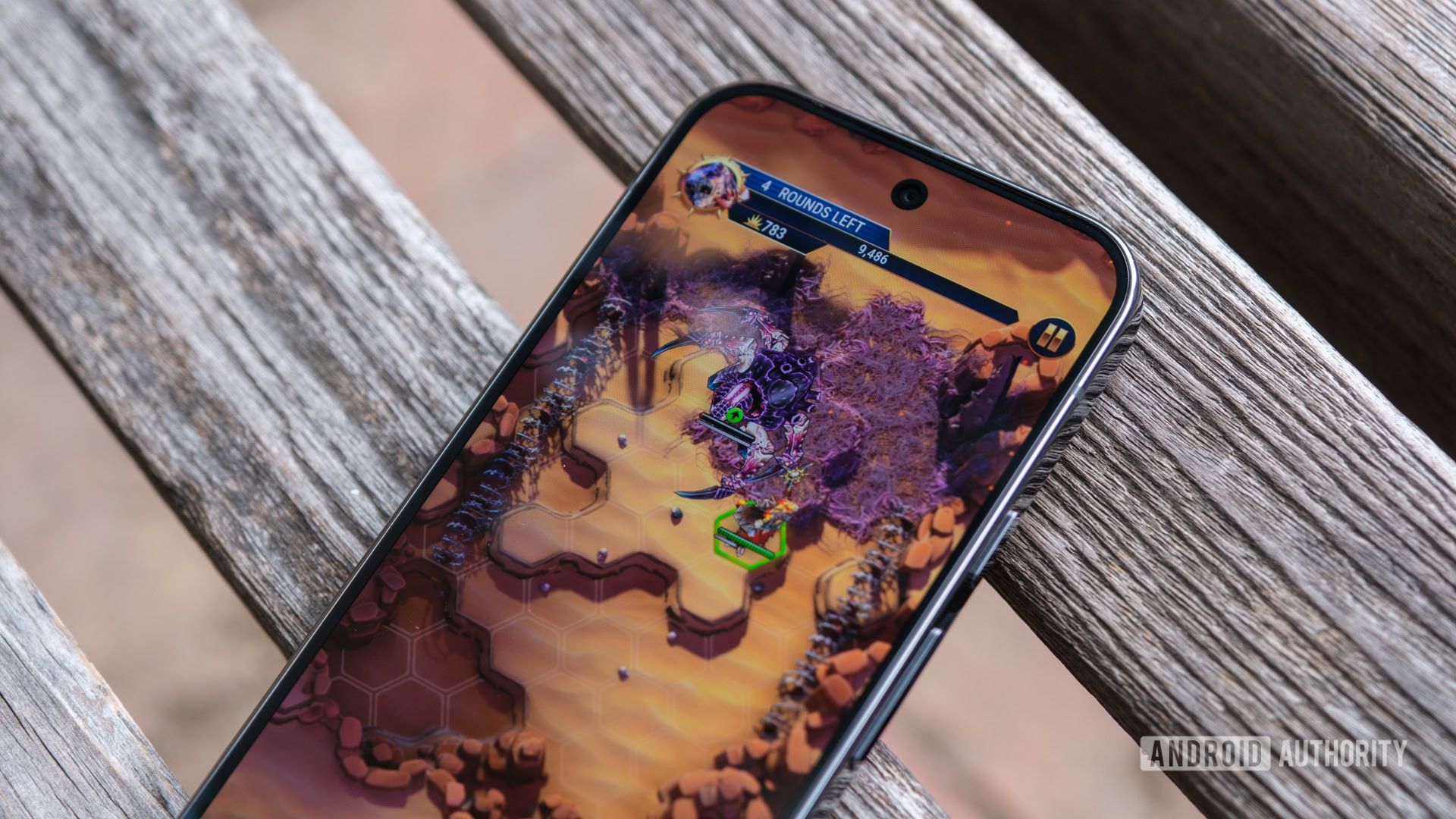
On the other hand, Google’s Tensor chips find their strengths in AI performance. Google runs shrunk-down versions of its AI models straight on the TPU on the SoC, letting you use many generative AI features without needing an internet connection. Au contraire, the general computing performance of Tensor lags behind the Snapdragon 8 series by a good margin, and Google doesn’t even mention gaming as a feature on Pixels in any way.
Apple has the best silicon on smartphones, while Google's strength lies in AI performance.
If you’re looking for pure performance or something for your gaming needs, the iPhones have an easy win here. Google has a lead for AI-related tasks, so if you use those a lot, you’d benefit from a Pixel.
iPhone vs Pixel: Camera
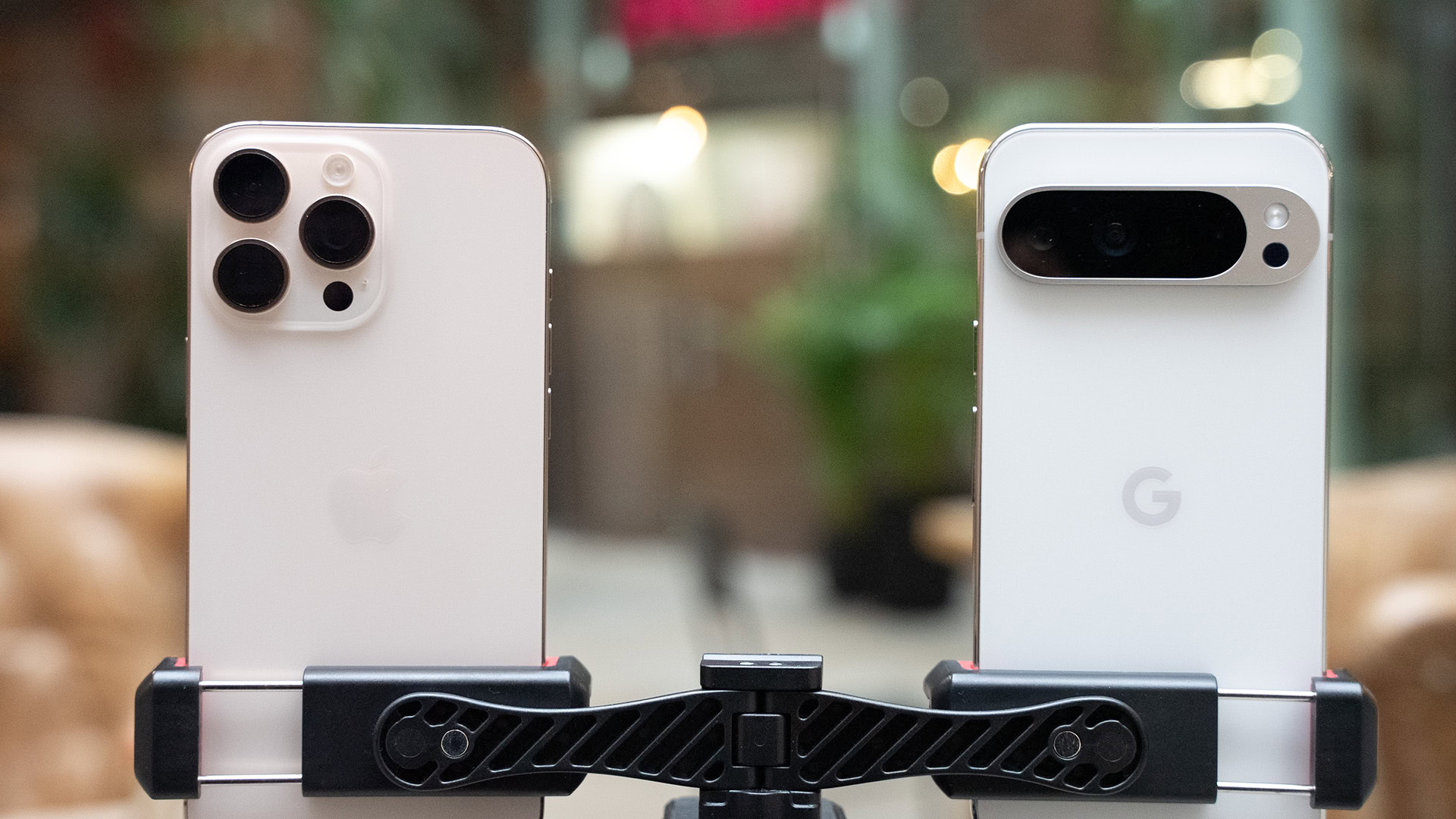
Surprisingly, the iPhone and the Pixel are neck and neck when it comes to the camera. Both companies prioritize a shoot-and-forget camera experience and prefer leaning on software algorithms to complement competent hardware. You won’t see either company adopt a spec-heavy sensor or other bleeding-edge component for the sake of the spec sheet. In fact, it’s pretty common for the camera spec to receive only minor changes across generations.
While the specific sensors and specs differ depending on which two phones from each camp you are comparing, the overall camera setup in both camps is surprisingly similar.
The base model of the Pixel and the iPhone comes with a standard primary camera and an ultrawide camera on the rear. Comparing the iPhone 16 vs the Pixel 9, the primary cameras on both phones have a high MP count and wide apertures and come packed with autofocus and image stabilization tech. The ultrawide camera has a more modest MP count and narrower aperture on the iPhone 16, while the Pixel 9 gets a higher MP count and wider aperture. Similarly, the front camera has a modest MP count on both devices, though the iPhone 16 has a relatively wider aperture.
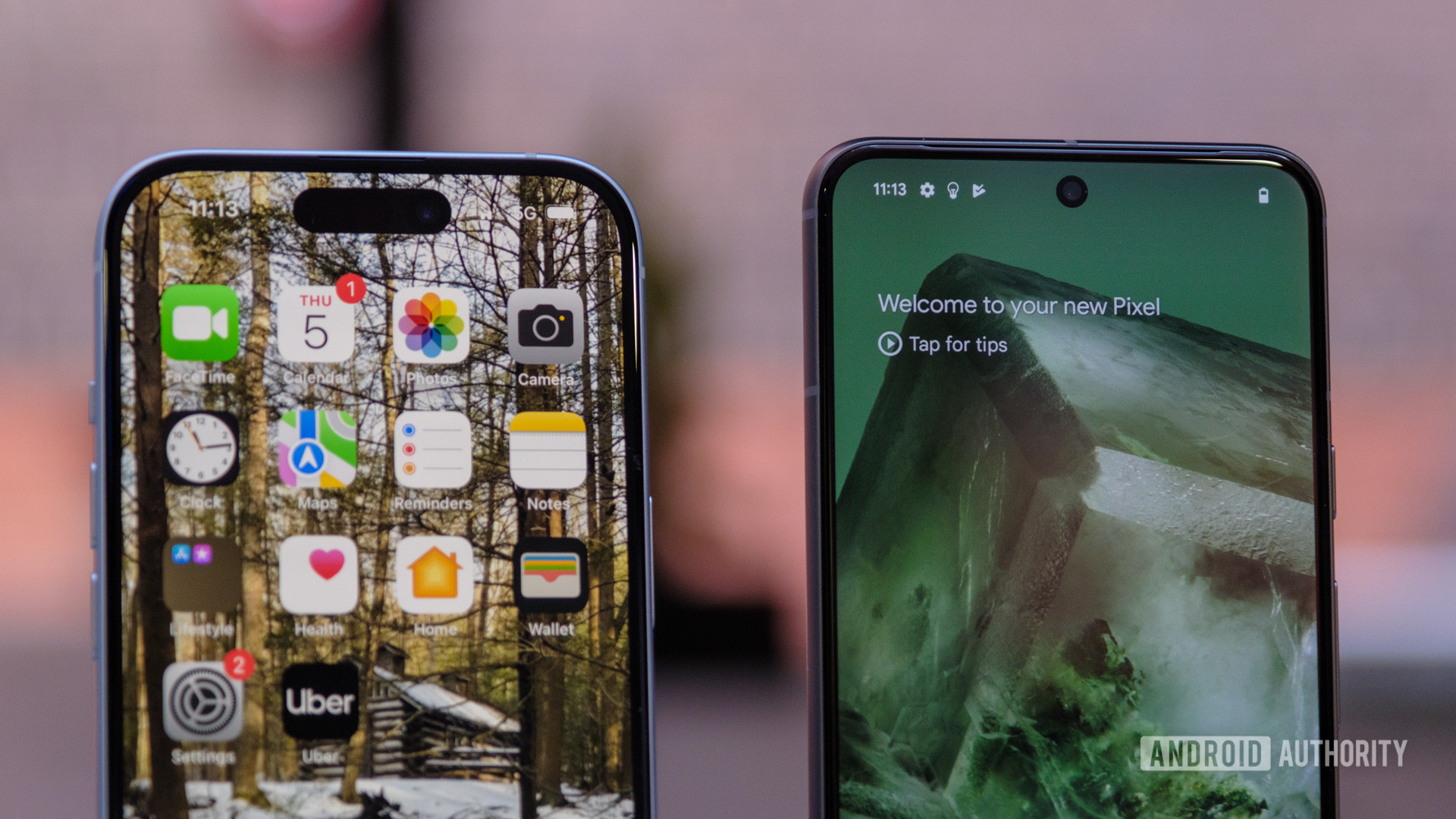
Comparing the iPhone 16 Pro Max vs the Pixel 9 Pro XL, the standard primary cameras have a high MP count and wide aperture. The ultrawide is also a high MP count sensor on both devices, though the Pixel 9 Pro XL has a significantly wider aperture than the iPhone 16 Pro Max. The Pixel 9 Pro XL continues to take the high road for the telephoto camera and the front selfie cameras, using high MP count sensors, while the iPhone 16 Pro Max does not obsess over the megapixels.
Both Apple and Google lean heavily on computational photography, where the software does a lot of heavy lifting. Their superior software algorithm makes past and present phones from them remain top contenders for the best camera smartphones. However, when it comes to giving users control, only Google has equipped the Pixel 8 Pro, Pixel 9 Pro, and Pixel 9 Pro XL with a manual camera mode. Previous phones in the Pixel lineup, and all iPhones, do not come with a manual camera mode.
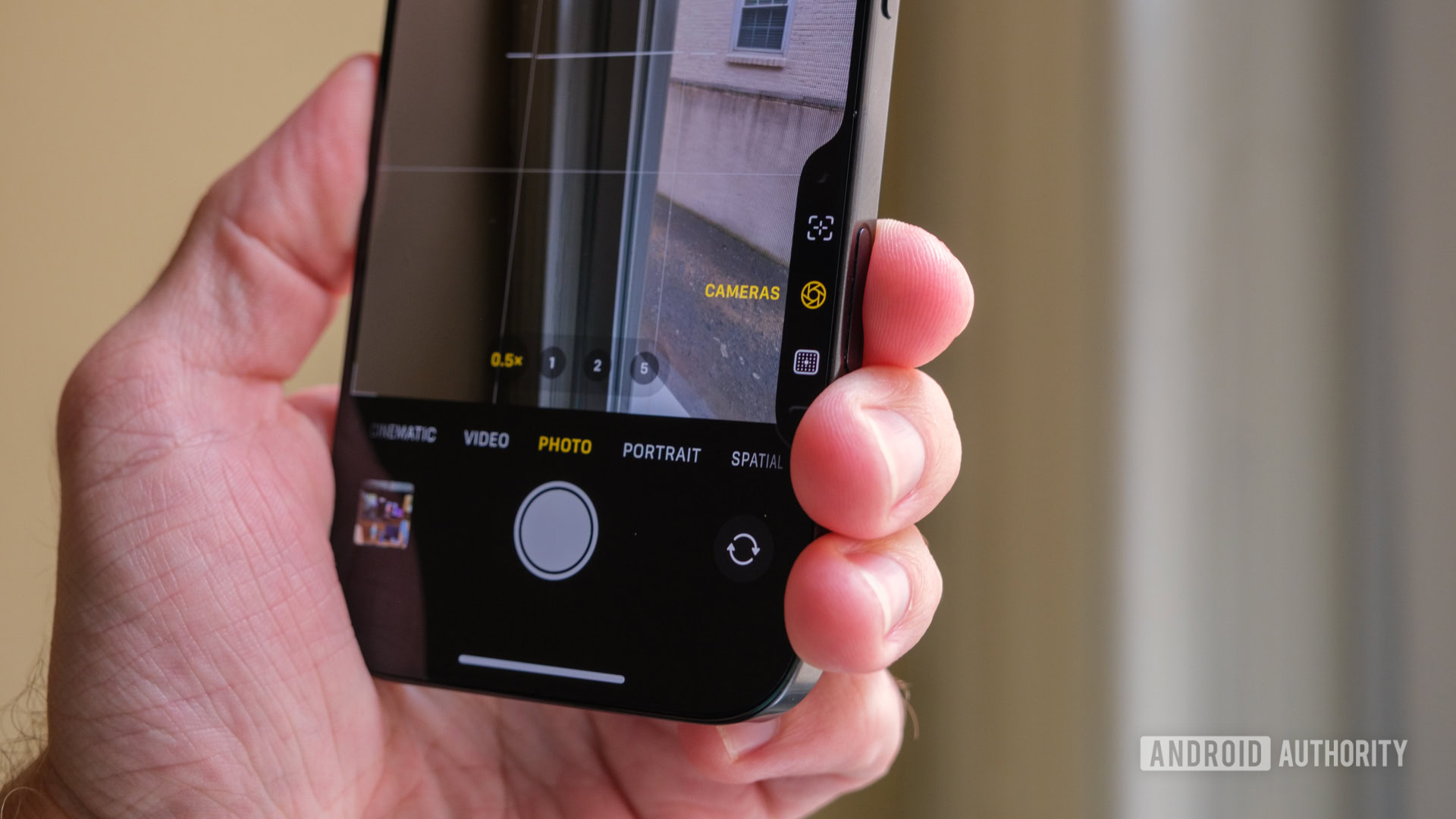
However, the new iPhone 16 series features new photographic styles that many users have come to appreciate. All four phones in the series also have the new Camera Control button, which lets you quickly launch the camera, click photos and videos, and change various settings.
iPhone vs Pixel: Display
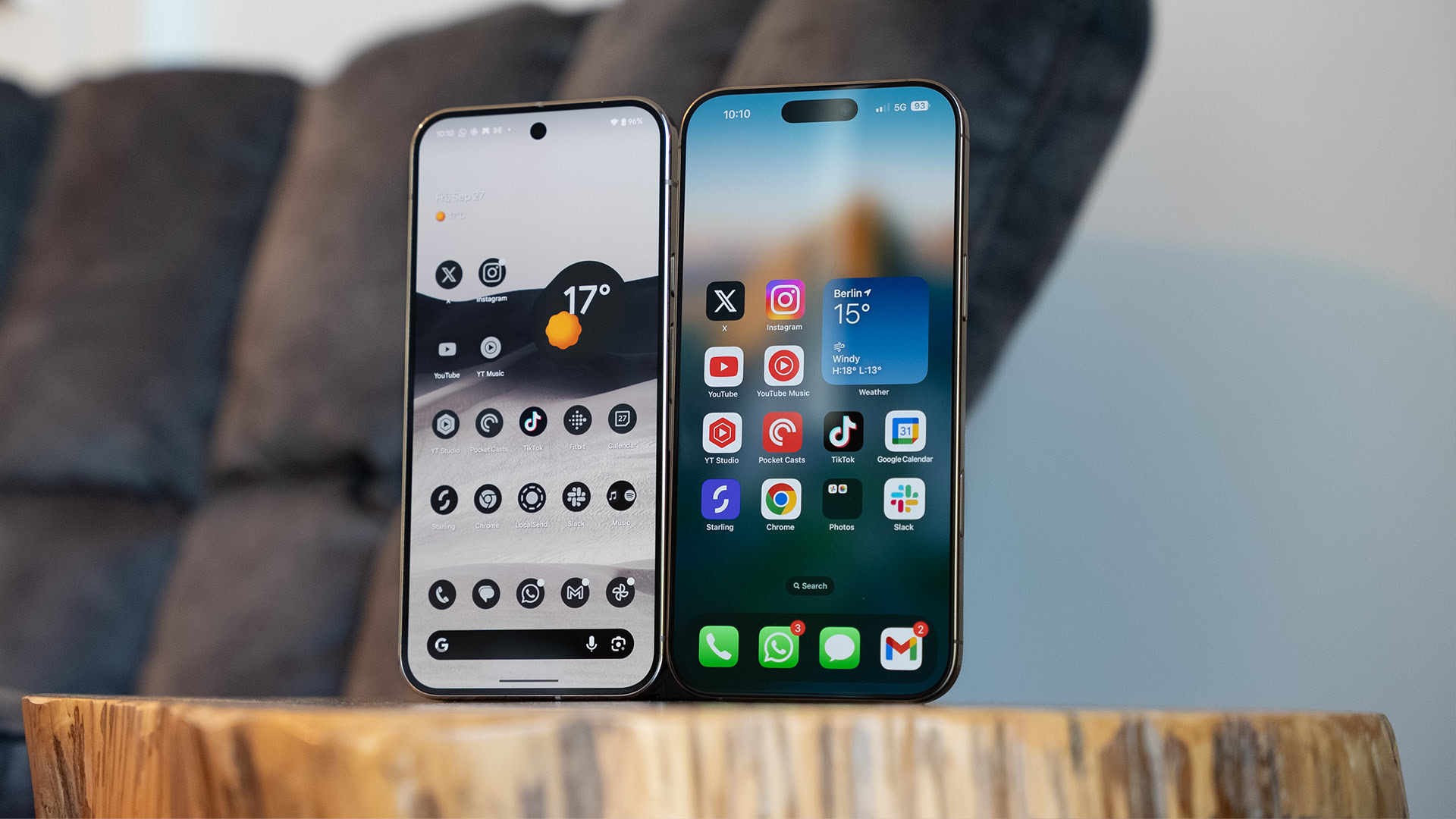
Both companies have similar philosophies on display, too. You get some great displays on these phones, but they aren’t best-in-class. They do the job but don’t stick around for a podium finish on the spec sheet.
The iPhone 16 and iPhone 16 Plus are two mainstream smartphones that still stick around with a measly 60Hz refresh rate display. Even budget Android phones have set 90Hz refresh rate as their minimum. One can argue that the animations on iOS do a great job of hiding the low refresh rate from the average consumer (and also that most people can’t notice the refresh rate or don’t care enough). The phones also miss out on Always-On Display as a feature.
Thankfully, the iPhone 16 Pro and iPhone 16 Pro Max have a 120Hz refresh rate and an Always-On Display functionality.
The iPhone is the only modern smartphone stuck in the 60Hz era, while the Pixels have moved on to having at least 90Hz as their minimum refresh rate.
All phones in the iPhone 16 series come with Dynamic Island, which is Apple’s branding for the space within the display for the front camera and other sensors. Apple also follows two sizes: regular and Plus/Pro Max, though the latest iPhone Pro series has bigger displays. As a result, we get the following lineup of OLED displays on the iPhone 16 series: 6.1-inch for the iPhone 16, 6.3-inch for the iPhone 16 Pro, 6.7-inch for the iPhone 16 Plus, and 6.9-inch for the iPhone 16 Pro Max. The company has also stuck with a 19.5:9 aspect ratio, making these phones some of the widest ones available now.
Thankfully, Google fares better for its OLED displays. Even the older Pixel 7a has a 90Hz display, while the current generation Pixel 9, 9 Pro, and 9 Pro XL have a 120Hz refresh rate. The smaller Pixel 9 and Pixel 9 Pro have a 6.3-inch display, while the larger Pixel 9 Pro has a 6.8-inch display.
Google has adopted a 20:9 aspect ratio for its lineup, which makes the devices narrower and taller but easier to grip. All of Google’s recent phones have an Always-On Display functionality.
iPhone vs Pixel: Battery
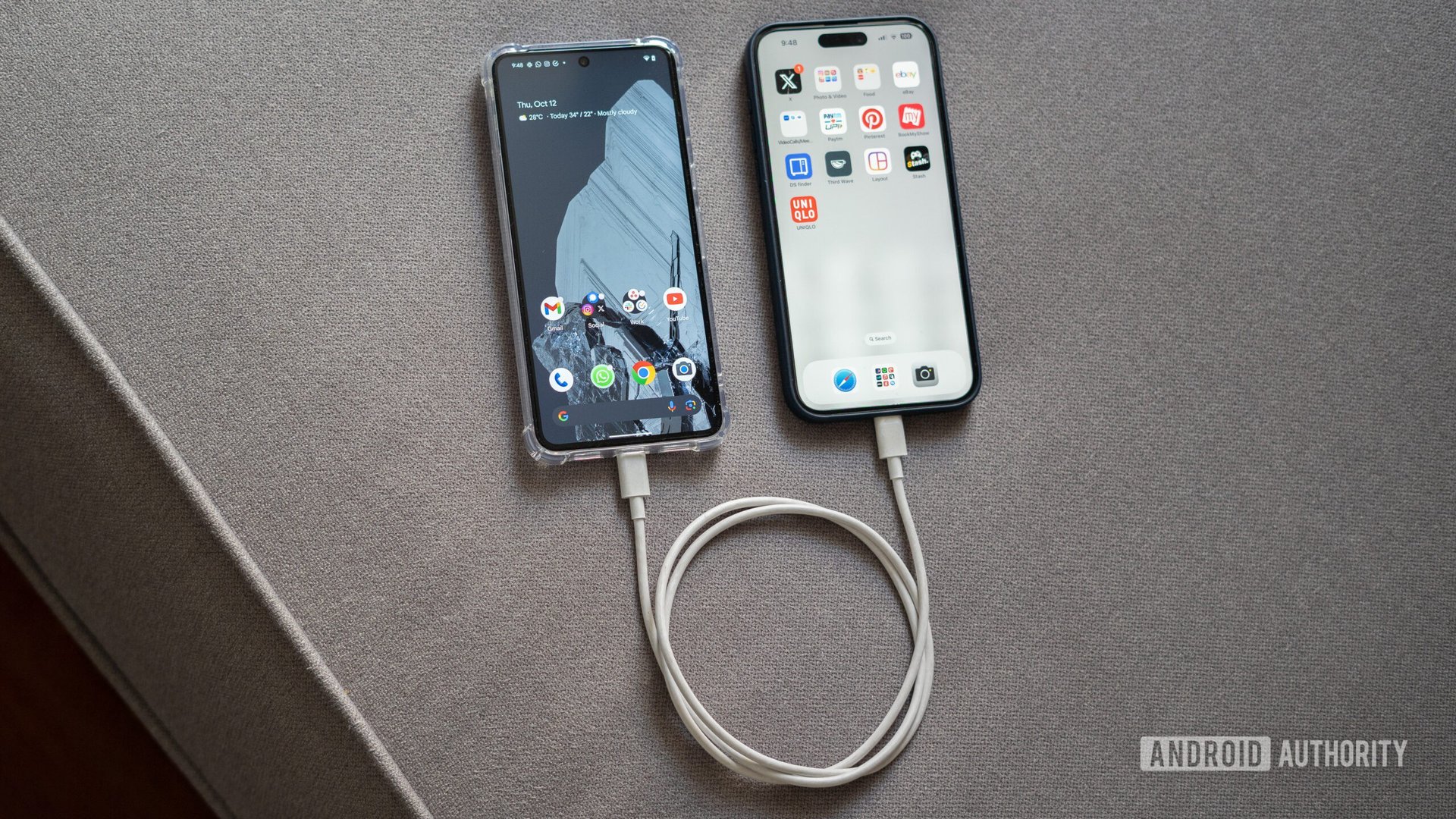
Apple and Google follow the same broad philosophy regarding battery and charging. Their phones come with batteries that can be best described as “adequate” in physical capacity (Apple doesn’t even bother disclosing the capacity). But thanks to software optimizations, the companies can promise consumers an all-day battery life across most of their lineup. In fact, the optimizations on the iPhone 16 Plus and the iPhone 16 Pro Max even allow them to achieve multi-day battery life.
The charging speeds of the phones from both companies are some of the slowest in the industry, though recent top-tier flagships have made some progress. Other phone companies, especially Chinese brands, have jumped on the fast charging bandwagon and can deliver charging speeds as high as 150W, which can fully charge phones with beefy 4,500mAh battery in about 20 minutes. Meanwhile, iPhones and Pixels take anywhere between an hour and two to charge their battery fully, and most users have made their peace with overnight charging for these phones.
Neither ships a charging brick with their phones anymore, either. So, if you pick either phone up, be prepared to splurge a little and get a good charger.
iPhone vs Pixel: Software, security, and ecosystem
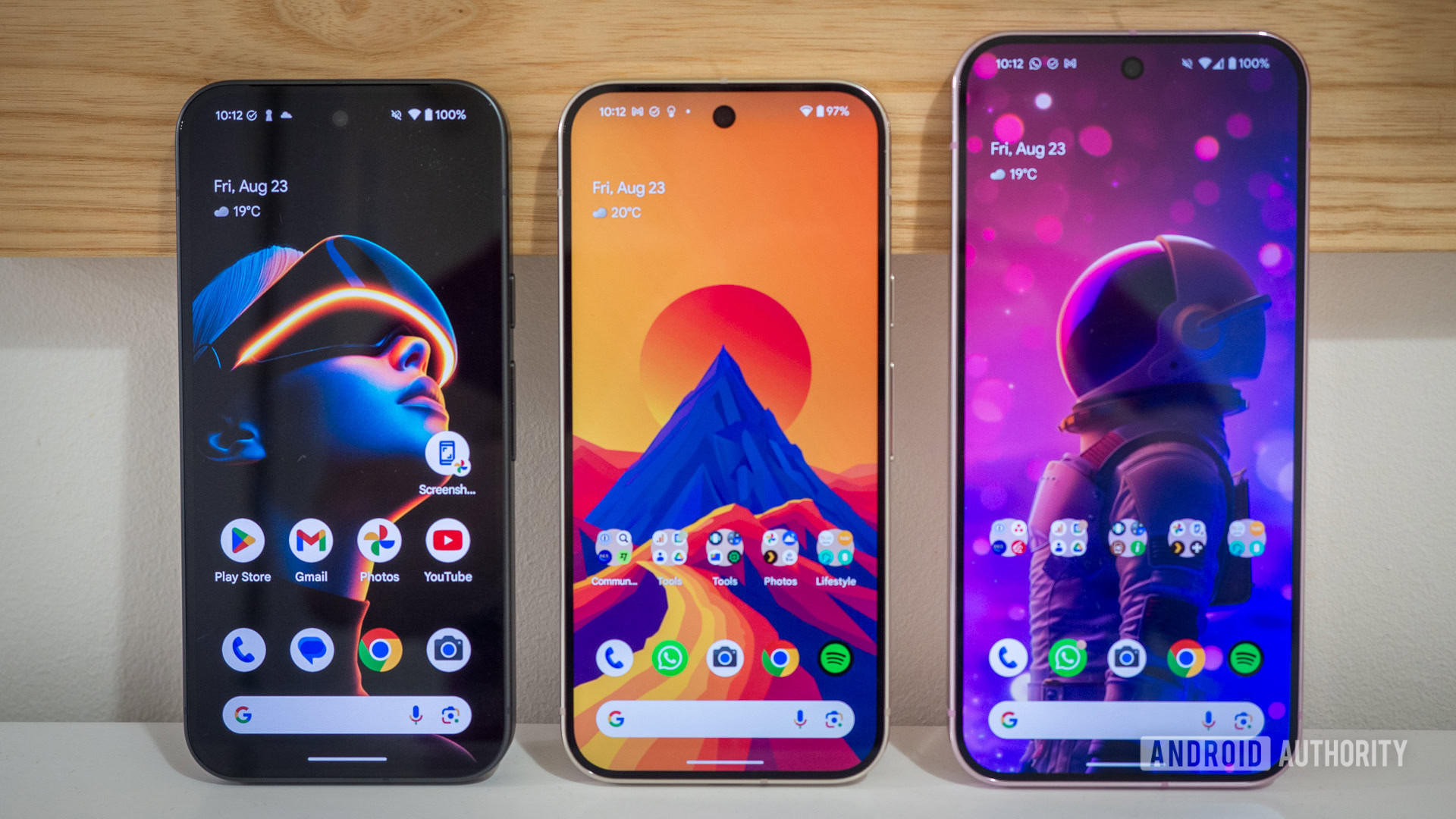
When it comes to software, everyone already has their mind made up. You either love Android or you love iOS. Although there are broad differences between the two operating systems, both achieve the same goal of customer delight.
Generally, iOS is considered a more “bug-free” OS, whereas Android, especially on the Pixels, has not earned that tag. Pixels are specifically notorious for getting new bugs alongside new feature drops, and we’re used to the Pixel experience being very different at launch as against a few months down the line.
Apple largely provides a consistent user experience for iPhones, even if it isn’t bleeding edge or as feature-rich as Android. iOS is simple and gives users limited options, and they are happy with it. Android opens up the world, and users on the other end of the spectrum value this on their phones.
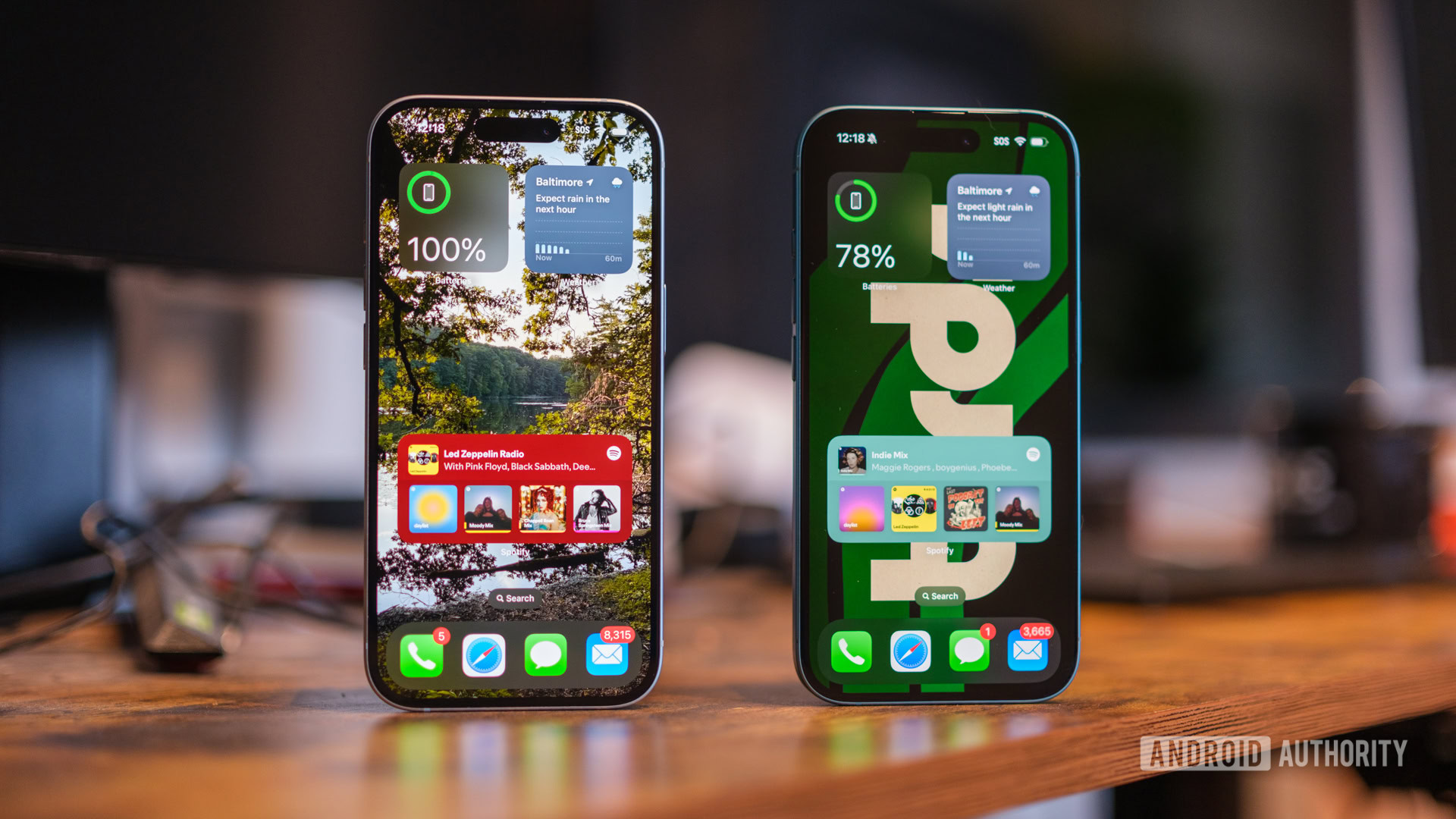
It’s worth mentioning that iOS has largely avoided incorporating AI within itself. As a broad platform, Android has also stayed away from AI so far, but Google has added many AI-enabled features to Pixel UI, significantly elevating the Pixel experience.
Google is the current market leader for software updates, while Apple makes no promises.
If you value a long software support window, Google is the current market leader for software updates (tied with Samsung). On the Pixel 9 series, Google has promised seven years of updates. Apple conventionally was considered the king of software updates, but the company does not actually commit to any number of updates or years of support for the iPhone 16 series. iPhones see software support for a very long time (often extending into six years). Still, Apple can no longer be considered a market leader without an explicit promise of providing software support for seven years.
As for security, both iPhones and Pixels do a great job. Google has quickly addressed any security issues that pop up on the Android platform and on Pixel devices. Apple does it, too, but it has the added advantage of a closed ecosystem that is harder for bad actors to exploit. The iPhone has a marginal lead here, though, as mentioned, the Pixels also perform very well.
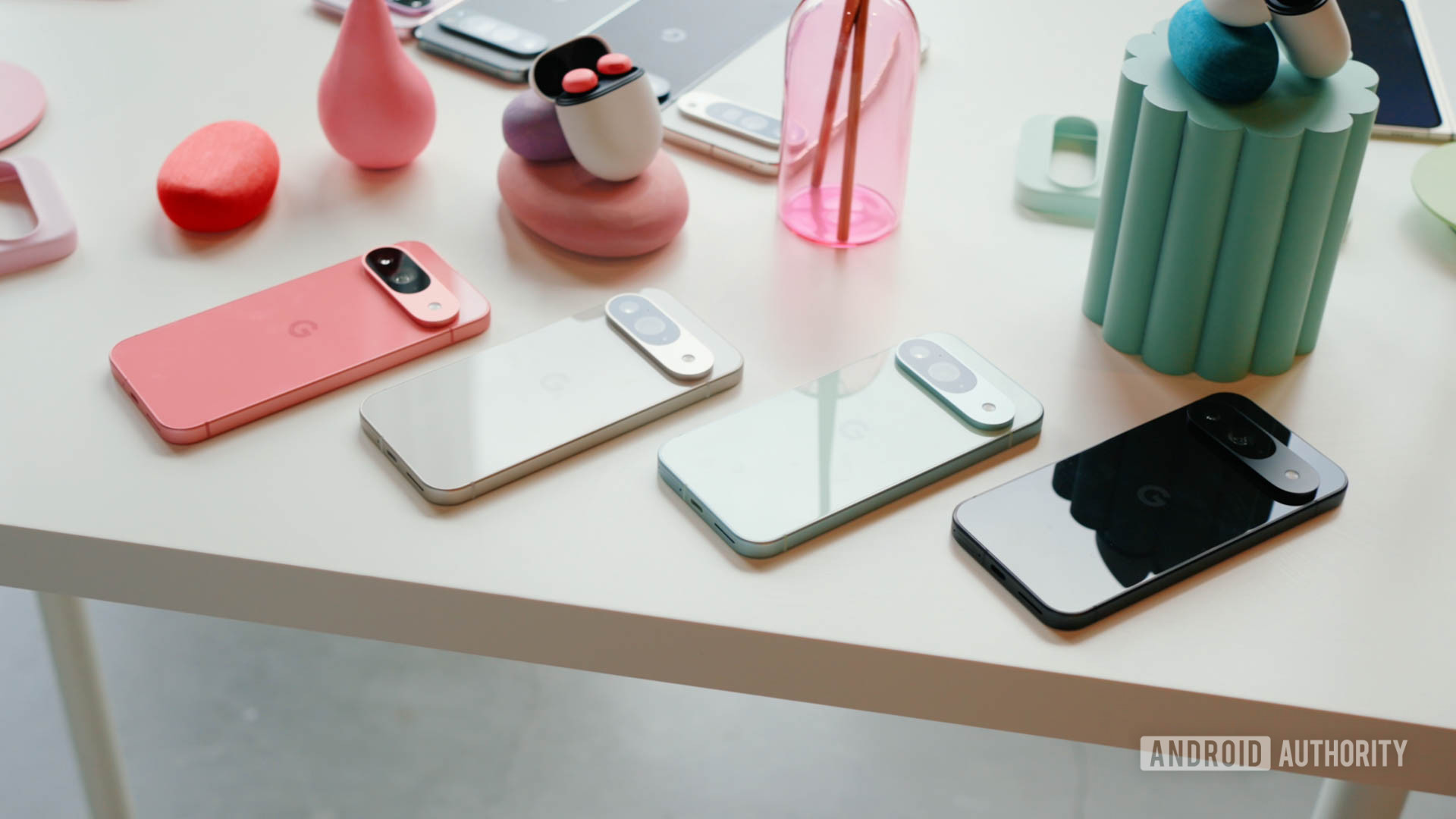
Speaking of the ecosystem, the iPhone wins over the Pixels in this category, hands-down. The iPhone with iOS forms the center of Apple’s experience, with exclusive accessories like the excellent Apple Watch adding to the iPhone experience. Apple also has AirPods, iPads, HomePods, and Macs, all of which complement the iPhone and each other very well. Apple’s ecosystem experience shines when you have devices beyond the iPhone, and even hardcore Android fans will concede that Apple maintains its walled garden very well. The iPhone also has MagSafe, which gives rise to a unique accessory ecosystem that other Android makers have been unable to replicate.
In contrast, Google has been diligently attempting to build the Pixel ecosystem, but Android’s open nature makes the landscape a bit more challenging.
The Pixel phones not only have to work well with Pixel ecosystem products like the Pixel Buds, the Pixel Watch, and the Pixel tablet, but they also need to work well with other accessories and products compatible with the wider Android ecosystem. Solutions like Fast Pair have made using a wide range of popular earphones with the Pixel (and other Android phones) easier. Ongoing work with solutions like Nearby Share (recently renamed to Quick Share) makes it easier for Pixel phones to share files with other Android phones and even Windows PCs. Pixel’s ecosystem can thus be considered significantly wider than iPhones but not as deeply interconnected.
The Pixels can take advantage of Android's open nature for their ecosystem.
The ecosystem extends beyond hardware, and the same underlying philosophies exist for apps and services. All of Apple’s apps on iOS have been specifically tailored to work excellently on the iPhone, and you’d often find that Apple does not even bother shipping an Android app (like in the case of FaceTime). On the other hand, Google develops its apps and services not only for Pixels and the wider Android platform but also for iOS in most cases. So, these services operate independently and have no intrinsic advantages reserved for Pixels.
For users who do not desire to lock themselves to Google’s hardware forever, the Pixel gives a balanced experience. If you do not mind pledging your loyalty to one corporation for decades, Apple offers an unbeatable ecosystem experience.
iPhone vs Pixel: Value for money
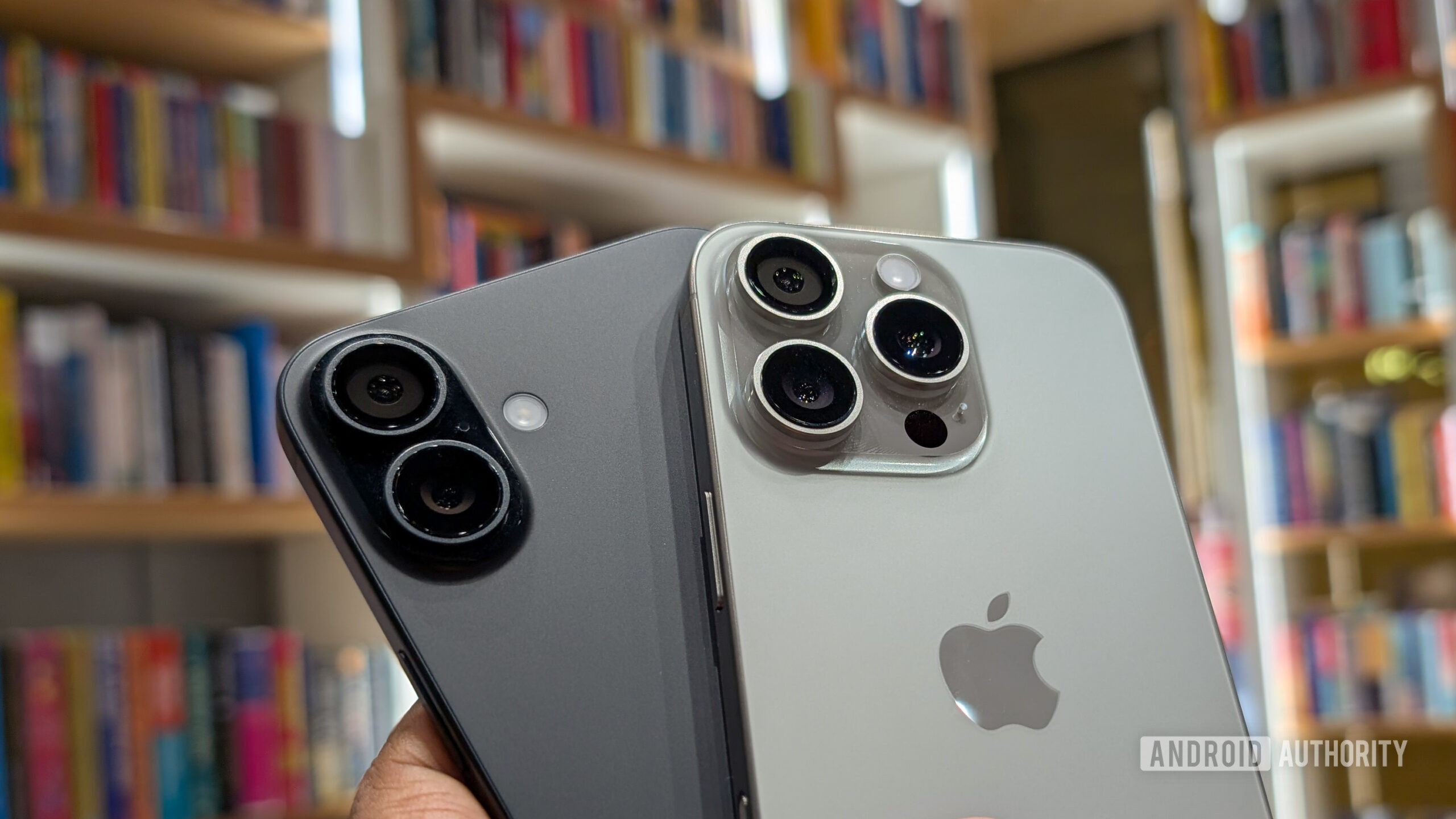
To judge the two lineups for their “value for money” factor, we’ll have to make three sub-lineups: budget, sub-flagship, and flagship. Arguably, what value you get from your phone will depend heavily on your expectations, how much you have paid, and how much value you attach to that money. Still, we can get some generic trendlines.
In the budget segment, Apple has older iPhones and the iPhone SE, which compete against the Pixel A series. I’d argue that the iPhone SE is not great value for money, as it targets a very specific demographic of users whose needs differ from the majority. Older iPhones that Apple continues to sell (like the iPhone 14 right now) provide great value at their reduced prices, but the Pixel A lineup often offers a newer product with a better experience and longer support.
The vanilla Pixel offers a strong value-for-money proposition in the sub-flagship segment. The base iPhone does too, but it comes with fair compromises that tip the scales in Google’s favor, although one can fairly argue that the iPhone 16 is the strongest base iPhone we’ve seen in a long time.
Pixels are generally better value than iPhones, but the iPhone 16 closes the gap on the Pixel 9.
In the flagship segment, Apple’s Pro and Pro Max iPhones are too expensive for what they do. The Pro Pixels are costly, too, but you get more phone for the money you pay, and it’s easier to justify the lower cost for the product you receive.
So broadly speaking, the Pixels offer more value for money than iPhones, but it is not an even distribution across the lineup.
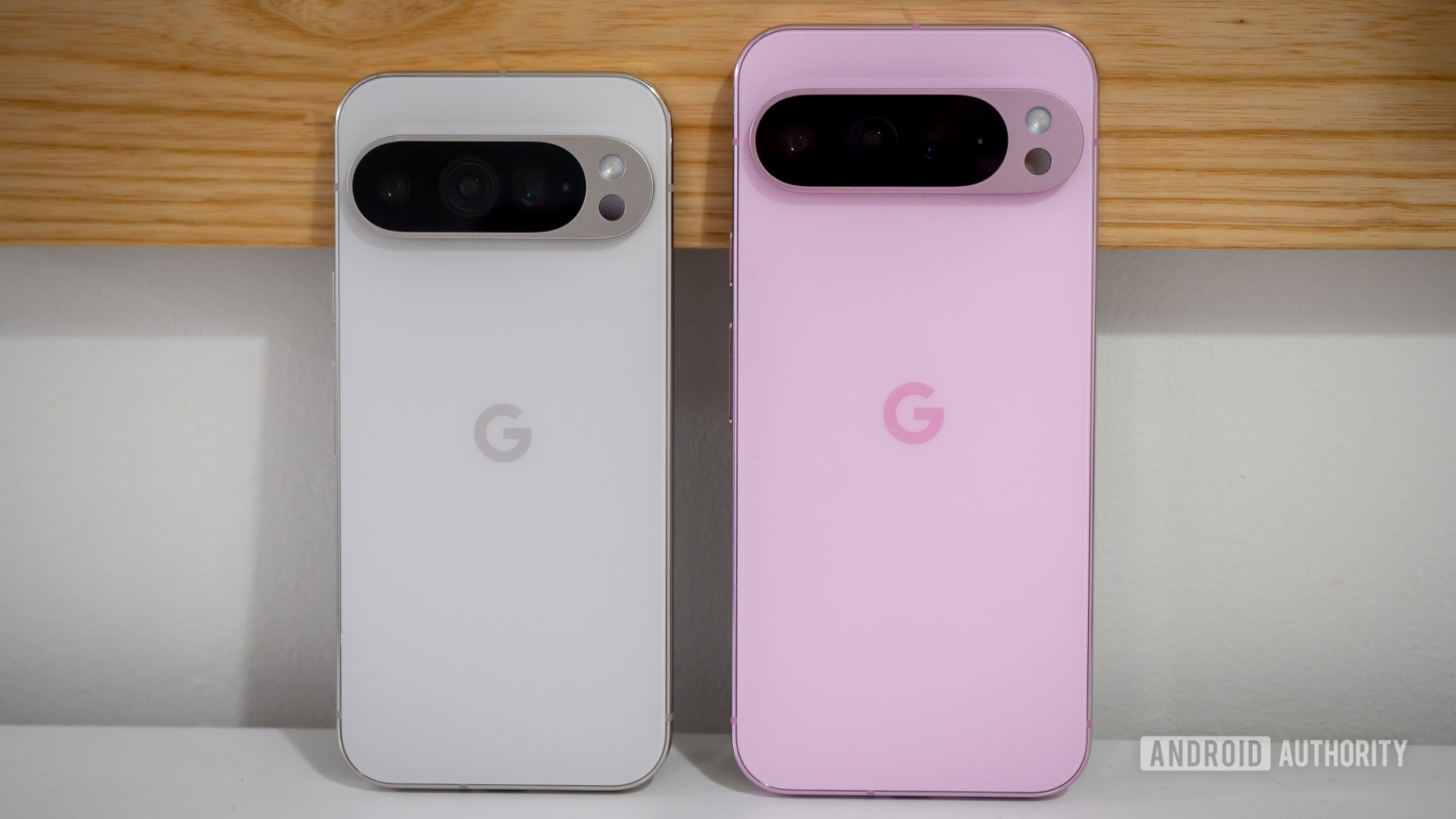
Beyond purchase, iPhones tend to hold value longer than Pixels thanks to robust demand for pre-owned iPhones. But for frequent upgraders, Google also offers great trade-in deals on its Pixels (and even on iPhones) when you jump to a newer Pixel.
Google has promised spare parts availability for seven years for the recent Pixels. Apple makes no such promises but benefits from a wider repair network and easier part availability for currently supported models. As for cost, iPhones are generally more expensive to repair, but Pixels aren’t all that cheap to fix either. Both Apple and Google offer self-repair kits, but Apple’s kits are comically impractical for most users.
iPhone vs Pixel: Winner

At the end of the day, what is better: iPhone or Pixel? The answer to this, unfortunately, is not so straightforward. Which of these is better for you depends entirely on what you need out of your phone, your preferences and biases, and how much you are willing to spend for all of it.
Comparing spec to spec, the Pixel often has better displays, more AI smarts, a better camera for photography, and a stronger longevity promise. The iPhone often has a better chip, better camera for videography, better battery life, better hardware, and better app ecosystem.
More generally speaking, iPhones make great recommendations for users who do not want to pay much attention to their phones. iPhones can get the task done and get out of the way, and they do it without caring much about the spec sheet. The app experience is also more optimized, and that ecosystem experience has plenty of benefits, even if you remain locked into Apple’s walled garden.
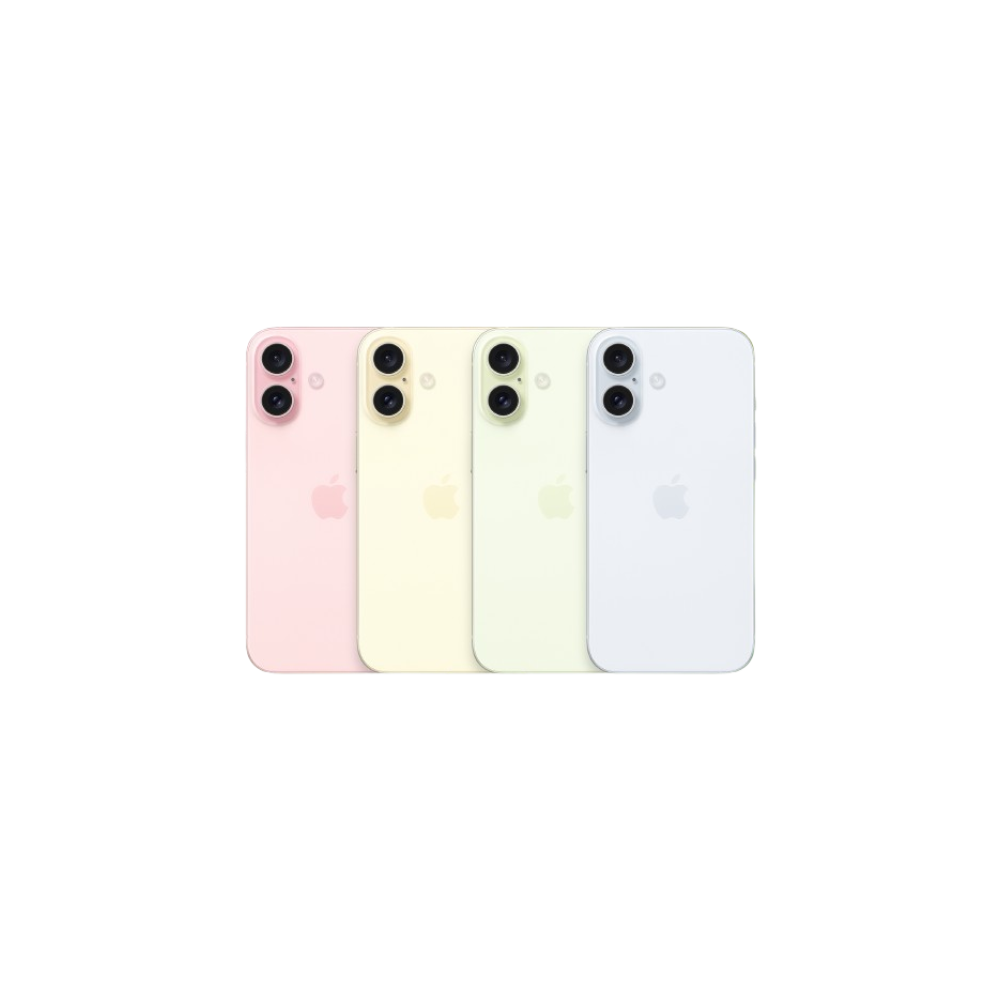
On the other hand, Pixel phones are great for users who want to remain engaged with their phone in meaningful ways but not obsess too much over specifications. Pixels offer delightful experiences that go beyond the spec sheet, but you recognize that you won’t be getting the bleeding edge of specs along with it. Pixels also come with all of the freedom and openness of Android, and for many users, this more than makes up for any shortcomings.


Which is better, iPhone or Pixel?
iPhone vs Pixel: FAQ
Apple earbuds work with Pixels and other Android smartphones, though you lose out on some functionality like Siri and ear detection. Apple Watches do not work with Pixels or any other Android smartphone and work only when paired to an iPhone.
Pixel earbuds work with iPhones, though you lose out on some functionality like Google Assistant. Pixel watches do not work with iPhones and work only when paired with a Pixel smartphone or any other Android smartphone.
Yes, Google Pixel smartphones can Facetime with iPhones, provided they join the link shared by the iPhone. Pixel smartphones cannot initiate a Facetime as Apple has not released a Facetime app for Android.
Yes, you can transfer data from a Pixel to an iPhone as part of the device setup process. It is still advisable to back up your most important data elsewhere and verify if it has been correctly restored after device migration.
Yes, you can transfer data from an iPhone to a Pixel as part of the device setup process. It is still advisable to back up your most important data elsewhere and verify if it has been correctly restored after device migration.